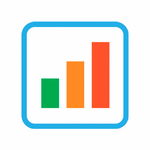Recent Discussions
-
Absence of the Qlik Enterprise Manager Connector in Application Automation
Hi Support, I recently noticed that the Qlik Enterprise Manager connector blocks are missing from Application Automation (see below) However, in the u... Show MoreHi Support,
I recently noticed that the Qlik Enterprise Manager connector blocks are missing from Application Automation (see below)
However, in the user guide it is still listed as a connector.
Just wondering if it has recently been removed from Application Automation, or do the Enterprise Manager blocks now fall under a different connector set.
Any insight into this is greatly appreciated.
Thanks,
Nak
-
Language? Cache Burst Issue
We recently updated to the November 2024 Qlik Sense Enterprise upgrade and are running into a few issues with potentially cross site authentication. ... Show MoreWe recently updated to the November 2024 Qlik Sense Enterprise upgrade and are running into a few issues with potentially cross site authentication.
Steps taken by external user
1. Access public facing website
2. Click link to login to subdomain
3. Auth via SSO
4. Click link within sub domain to be directed to Qlik Hub
5. Page hangs silently (Shows "bubbles" continuously)
If i check the web dev tools i can see that the Language?Cachebust=(Random Number) load is just sitting on pending. We are in NZ and have our language set to English so I'm unsure what the potential issue could be.
This process was fully functional prior to the update.
-
Excel-Like Spreadsheets, Apple Giveaways & More — Welcome to Booth #1007 at Qlik...
Qlik Connect 2025 is coming up, and we at AnyChart are excited to be back as a sponsor!You know us — we never show up empty-handed 😎 Visit us at Boot... Show MoreQlik Connect 2025 is coming up, and we at AnyChart are excited to be back as a sponsor!
You know us — we never show up empty-handed 😎 Visit us at Booth 1007 to:- Try Spreadsheets, our brand-new extension bringing Excel-style functionality into Qlik Sense.
- See what's new and upcoming in tools like Decomposition Tree and Gantt Chart.
- And... get a chance to win amazing Apple prizes, from AirPods to a MacBook!
👉 Check out our Qlik Connect page for more details and one-on-one scheduling.
Come meet our team in person, and let's make the most of #QlikConnect together. See you at Disney Coronado Springs, May 13–15, 2025!
-
Visit AnyChart at Qlik Connect: Booth 1007 with New Excel-Style Spreadsheets & A...
Qlik Connect 2025 is coming up, and we're excited to be back as a sponsor!You know us — we never show up empty-handed 😎 Visit us at Booth 1007 to:Try... Show MoreQlik Connect 2025 is coming up, and we're excited to be back as a sponsor!
You know us — we never show up empty-handed 😎 Visit us at Booth 1007 to:- Try Spreadsheets, our brand-new extension bringing Excel-style functionality into Qlik Sense.
- See what's new and upcoming in tools like Decomposition Tree and Gantt Chart.
- And... get a chance to win amazing Apple prizes, from AirPods to a MacBook!
👉Check out our Qlik Connect 2025 page for more details and one-on-one scheduling.
Come meet our team in person, and let's make the most of Qlik Connect together. See you at Disney Coronado Springs, May 13–15, 2025!
-
Visit Booth #1007 at Qlik Connect: New Excel-Style Spreadsheets, Apple Prizes & ...
Qlik Connect 2025 is coming up, and we at AnyChart are excited to be back as a sponsor!You know us — we never show up empty-handed 😎 Visit us at Boot... Show MoreQlik Connect 2025 is coming up, and we at AnyChart are excited to be back as a sponsor!
You know us — we never show up empty-handed 😎 Visit us at Booth 1007 to:- Try Spreadsheets, our brand-new extension bringing Excel-style functionality into Qlik Sense.
- See what's new and upcoming in tools like Decomposition Tree and Gantt Chart.
- And... get a chance to win amazing Apple prizes, from AirPods to a MacBook!
👉 Check out our Qlik Connect page for more details and one-on-one scheduling.
Come meet our team in person, and let's make the most of #QlikConnect together. See you at Disney Coronado Springs, May 13–15, 2025!
-
Sort List by Date from and Date to
Hi guys,I have a table like this:productdate_fromdate_topriceA18.02.202531.12.999989,99A08.03.202431.12.999979,99A29.01.202417.02.202469,99A12.01.2024... Show MoreHi guys,
I have a table like this:
product date_from date_to price A 18.02.2025 31.12.9999 89,99 A 08.03.2024 31.12.9999 79,99 A 29.01.2024 17.02.2024 69,99 A 12.01.2024 31.12.9999 75,99 A 21.11.2023 31.12.9999 84,99 and i want to sort the table like this:
product date_from date_to price A 18.02.2025 31.12.9999 89,99 A 08.03.2024 17.02.2025 79,99 A 18.02.2024 07.03.2024 75,99 A 29.01.2024 17.02.2024 69,99 A 12.01.2024 28.01.2024 75,99 A 21.11.2023 11.01.2024 84,99 Can anybody help me?
Thanks
Regards
Chris
-
Vulnerabilities OpenSSL 1.1.0
Hello!There are several outdated OpenSSL libs with vulnerabilities in connector packageQS May 2024 Patch 5 Nessus scan results:["OpenSSL Project OpenS... Show MoreHello!
There are several outdated OpenSSL libs with vulnerabilities in connector package
QS May 2024 Patch 5
Nessus scan results:
[
"OpenSSL Project OpenSSL 1.1.1h (C:\\Program files\\Qlik\\Sense\\Repository\\Postgresql\\12.5\\Bin\\)",
"OpenSSL Project OpenSSL 1.1.1k (C:\\Program files\\Common files\\Qlik\\Custom data\\Qvodbcconnectorpackage\\Hive\\Lib\\Libcurl64.dlla\\Openssl64.dlla\\)",
"OpenSSL Project OpenSSL 1.1.1k (C:\\Program files\\Common files\\Qlik\\Custom data\\Qvodbcconnectorpackage\\Hive\\Lib\\Openssl64.dlla\\)",
"OpenSSL Project OpenSSL 1.1.1k (C:\\Program files\\Common files\\Qlik\\Custom data\\Qvodbcconnectorpackage\\Impala\\Lib\\Openssl64.dlla\\)",
"OpenSSL Project OpenSSL 1.1.1n (C:\\Program files\\Common files\\Qlik\\Custom data\\Qvodbcconnectorpackage\\Mysql\\Lib\\Openssl64.dlla\\)",
"OpenSSL Project OpenSSL 1.1.0j (C:\\Program files\\Common files\\Qlik\\Custom data\\Qvodbcconnectorpackage\\Phoenix\\Lib\\Openssl64.dlla\\)"
]
Where we can download updated drivers or libs? -
Multi-KPI deprecated: Issue for KPI dashboards
Dear all,We've been using the multi KPI object to create a management dashboard which shows many different KPI at first glance (see "current solution"... Show MoreDear all,
We've been using the multi KPI object to create a management dashboard which shows many different KPI at first glance (see "current solution" attached). As the multi-KPI object will be deprecated, I'm forced to look for a new solution. Options for my use case I've so far detected are the following:
A) Use the normal KPI object (see "approach single KPIs")
- Advantage: high flexibility in formatting every single KPI
- Disadvantage: very very bad performance, since every KPI is a separate object (With that approach, I end up with around 300 objects on 1 sheet, taking around a minute to load --> no-go for the users
B) Use the "Text" object from the dashboard bundle by inserting a table (see "approach text object")
- Advantage: Lightning fast, loads below 1 sec (which is also a proof that my data model is not the issue in this case)
- Disadvantage: Poor formatting possibilities for the table itself, table columns are detached from the "visualization grid", I cannot add a bar chart which is properly aligned to the KPIs included in the table.
Does anybody have a good idea beside A) and B) how I could reach a similar design that I currently have (see "current status")?
Looking forward to your creative solution approaches.
Thanks, Sam
P.S.: I still have a bit the feeling that Qlik is rather weak when it comes to creating such extensive management dashboards, showing KPIs originating from many different apps (which is however a strong business need, since managers don't want to check many different apps on a regular basis, but get a fast overview of how things are going) in the different org units. But I'm of course fully open to get convinced by the opposite 😉
-
How to Create CSV and HTML Format Reports in Mail & Deploy using Qliksense App
Hi All,I have Qlik sense App and I am trying to generate the CSV and HTML Format Reports Mail & Deploy.I found object id's in Mail & Deploy Designer a... Show MoreHi All,
I have Qlik sense App and I am trying to generate the CSV and HTML Format Reports Mail & Deploy.
I found object id's in Mail & Deploy Designer and i am trying to drag these object id's into Designer Work space. In CSV format object is showing, but in preview the report it's showing only object ID not Object like table or chart.
When i am trying to create html format, I am getting code like below way.
<html><Header> <Title> Example</Title></Header>
<Body> <p> </p> </Body>
</html>
I am trying to drag the object id, it's not workout in html report format.
Can you please suggest me how to create CSV and HTML format report. if possible can you please share any document for Mail & Deploy for beginners.
Thanks & Regards,
Lakshman
-
Inconsistent table replication behavior in qlik replicate task (Few tables error...
Hi Qlik Team, We are running into a weird issue where few of the tables are erroring out in a replication task. To be precise, the task is trying to l... Show MoreHi Qlik Team,
We are running into a weird issue where few of the tables are erroring out in a replication task. To be precise, the task is trying to load (full load later CDC) ~150 tables and around 2 to 3 tables are erroring with the below exception.
We have checked with our db team and these are not partitioned tables.
When we reloaded the tables using the reload option on the ui, qlik was able to load them.
Question, Why is qlik running into this odd behavior. It is concerning as we have no clue of why this is happening. Manual intervention is not an option given the number of task that are being planned.
We also have a concern with CDC after the full load. Is it possible that this issue might arise on tables after full loads when the tables are in CDC.
stack trace:
00099692: 2025-05-14T14:18:24 [SOURCE_CAPTURE ]W: Table 'dbo.<TABLE>' is not uniformly mapped across partitions. Therefore - it is excluded from CDC (sqlserver_log_metadata.c:1733)
00099692: 2025-05-14T14:18:24 [SOURCE_CAPTURE ]I: Table 'dbo.<TABLE>' has been mapped and registered for CDC. (sqlserver_log_metadata.c:1104)
00100632: 2025-05-14T14:18:24 [TASK_MANAGER ]W: Table 'dbo'.'REC_PeriodInformation' (subtask 0 thread 0) is suspended. (replicationtask.c:3239)












